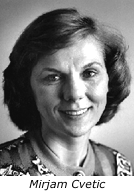
A former Google employee and her husband launched a new search engine Monday called Cuil (pronounced "cool",
http://www.cuil.com), aiming to topple Google by indexing more Web pages than the search giant.
Cuil, of Menlo Park, California, is led by Anna Patterson , a former leader of Google's search index and her husband, Tom Costello, who researched and developed search engines at Stanford University and IBM. The two, president and CEO, respectively, met at Stanford.
Russell Power, the third cofounder of the group, also worked at Google on search indexing, Web rankings, and spam detection. He works as vice president of engineering at Cuil.
The company, which shaved an 'L' off its name to become Cuil, said it has indexed 120 billion Web pages and can provide results organized by ideas with complete privacy for users.
Google on Friday said it had discovered 1 trillion unique Web pages on the Internet, but did not give an updated number on how many of those pages it has indexed.
Cuil said its search engine goes beyond traditional approaches by analyzing the context of each page and the concepts behind each query so it can provide better rankings by content rather than popularity. Cuil then organizes similar results into groups and sorts them by category. It also offers tabs to clarify subjects, as well as suggestions on how to refine searches.
Cuil isn't the first Google rival to launch this year. Wikia Search, a highly anticipated search engine from Wikipedia founder Jimmy Wales, made its official debut in January . Wikia Search hopes to provide better search results by allowing a community of users to index pages by using their Web page rankings and other suggestions, as well as its own indexing of the Web.
InfoWorld











